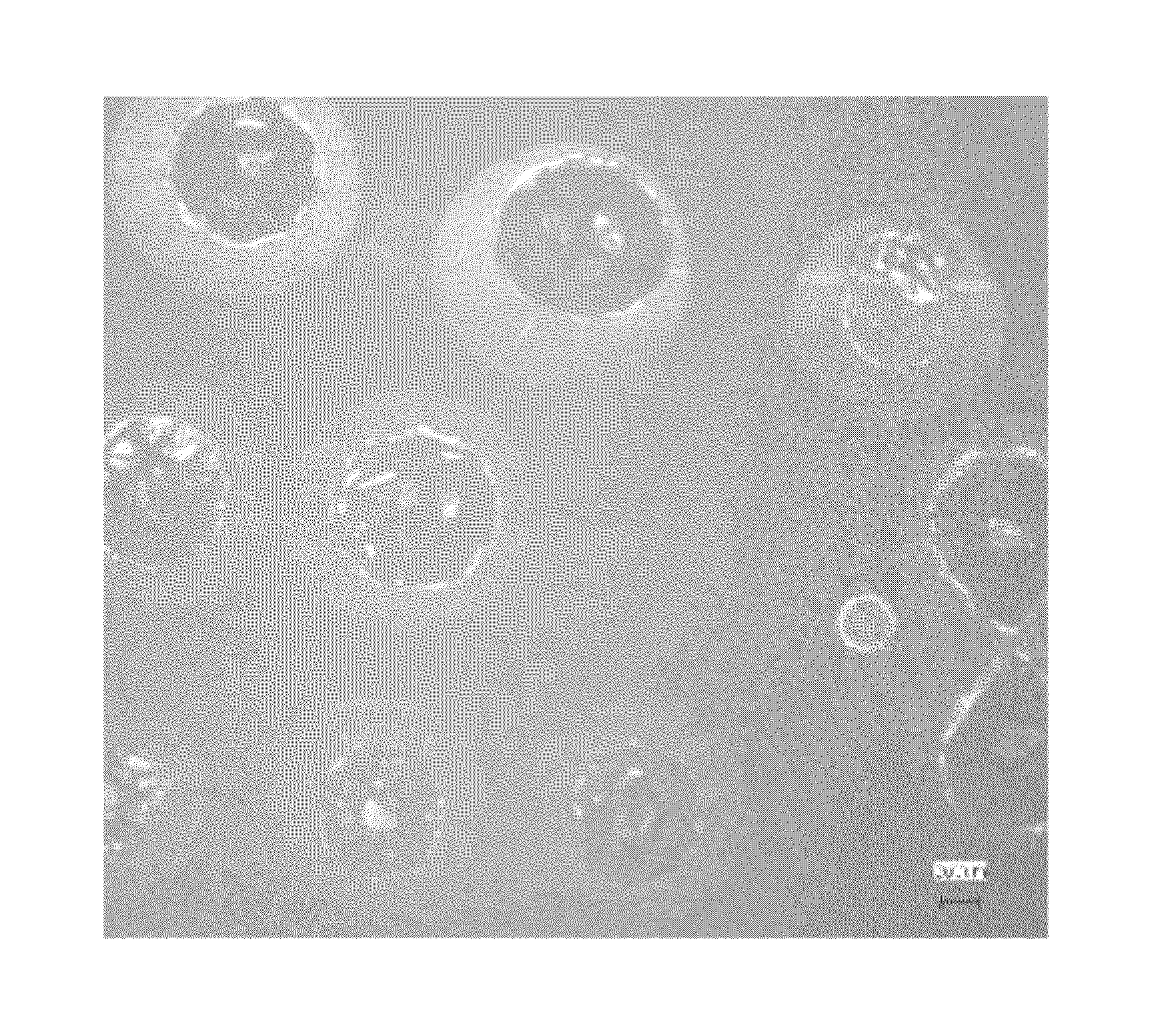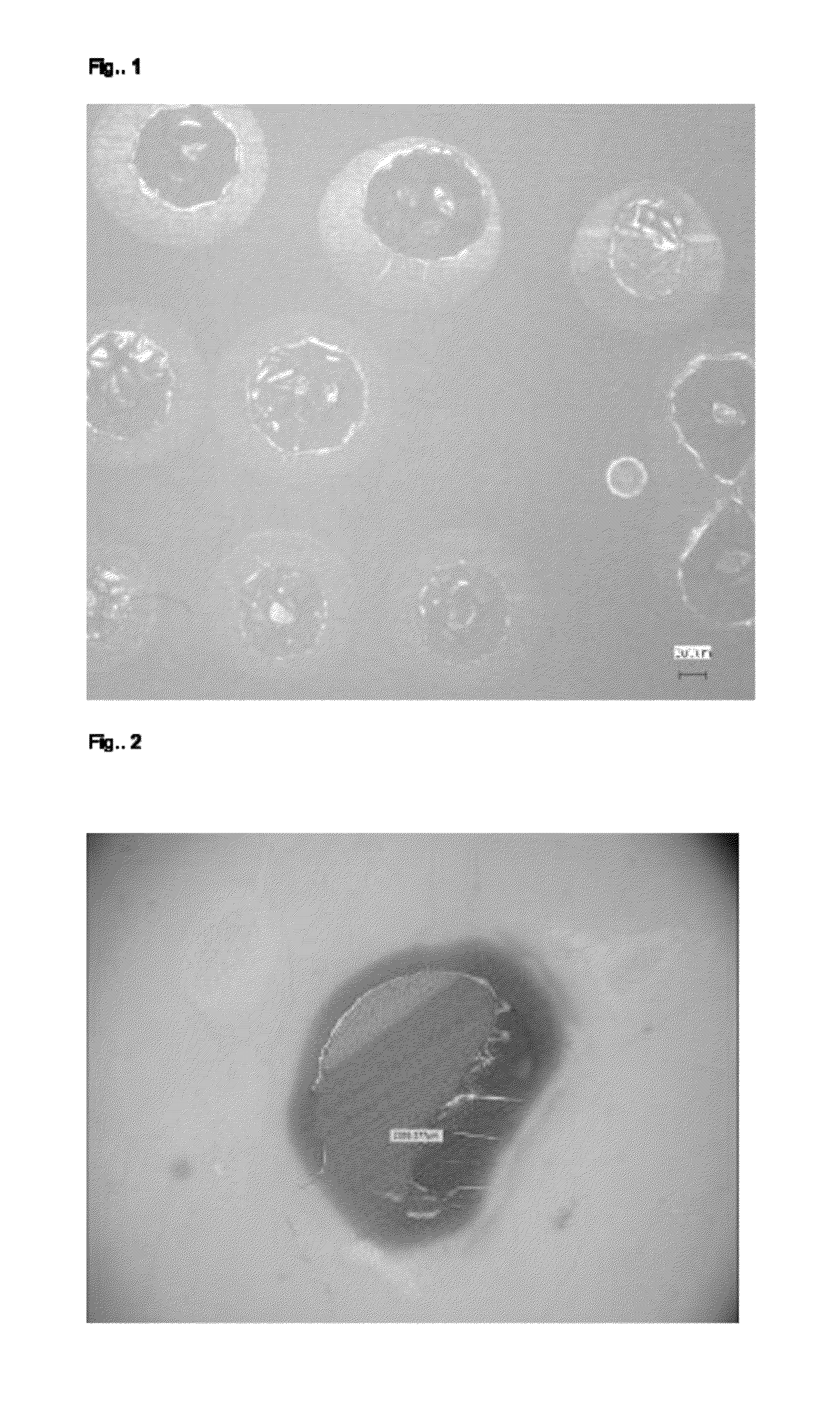Method for producing composite semipermeable membrane
a semi-permeable membrane and semi-permeable technology, applied in membrane technology, coatings, plasma techniques, etc., can solve the problems of skin layer defects, membrane chemical resistance, skin layer breakage, etc., and achieve excellent chemical resistance, high porosity, and high strength
- Summary
- Abstract
- Description
- Claims
- Application Information
AI Technical Summary
Benefits of technology
Problems solved by technology
Method used
Image
Examples
example 1
[0081](Production of Epoxy Resin Porous support)
[0082]To 2.33 g of bisphenol A type epoxy resin (manufactured by Japan Epoxy Resin K.K., trade name “EPIKOTE 828”, epoxy equivalent: 184-194 (g / eq)) was added 4.5 g of polyethylene glycol 200 (manufactured by Tokyo Chemical Industry Co., Ltd.), and the mixture was stirred at 2000 rpm for 5 minutes for dissolution, using a rotation / revolution mixer (trade name: “Awatori Rentaro” ARE-250), thereby to obtain an epoxy resin / polyethylene glycol solution. Then, 0.52 g of bis(4-aminocyclohexyl)methane (manufactured by Tokyo Chemical Industry Co., Ltd.) was added to the epoxy resin / polyethylene glycol solution, and the mixture was stirred at 2000 rpm for 10minutes for dissolution, using the rotation / revolution mixer, thereby to obtain an epoxy resin / polyethylene glycol / curing agent solution A.
[0083]The prepared solution A was applied on a soda glass plate having a secured certain thickness obtained by laminating two sheets of double-sided pres...
example 2
[0086]A composite semipermeable membrane was produced in the same manner as Example 1, except that an atmospheric pressure plasma treatment was applied to the front surface side on which a skin layer of an epoxy resin porous support is to be formed, under the condition of a nitrogen gas flow rate of 10 L / min and ammonia gas flow rate of 0.3 L / min in place of the nitrogen gas flow rate of 60 L / min in Example 1. Further, when the contact angle of ultrapure water on the treated surface of the epoxy resin porous support was measured in the same manner as Example 1, it was found to be 10 degrees. Moreover, the results of measuring the number of floating of the skin layer and the salt-blocking rate using the composite semipermeable membrane are shown in Table 1.
example 3
[0087]A composite semipermeable membrane was produced in the same manner as Example 1, except that an atmospheric pressure plasma treatment was applied to the front surface side on which a skin layer of an epoxy resin porous support is to be formed, under the condition of a nitrogen gas flow rate of 10 L / min, an ammonia gas flow rate of 0.3 L / min and a treatment intensity of 4.0 Wsec / cm2 in place of the nitrogen gas flow rate of 60 L / min and the treatment intensity of 2.0 Wsec / cm2 in Example 1. Further, when the contact angle of ultrapure water on the treated surface of the epoxy resin porous support was measured in the same manner as Example 1, it was found to be 8 degrees. Moreover, the results of measuring the number of floating of the skin layer and the salt-blocking rate using the composite semipermeable membrane are shown in Table 1.
PUM
| Property | Measurement | Unit |
|---|---|---|
| pore diameter | aaaaa | aaaaa |
| porosity | aaaaa | aaaaa |
| pressure | aaaaa | aaaaa |
Abstract
Description
Claims
Application Information
 Login to View More
Login to View More - R&D
- Intellectual Property
- Life Sciences
- Materials
- Tech Scout
- Unparalleled Data Quality
- Higher Quality Content
- 60% Fewer Hallucinations
Browse by: Latest US Patents, China's latest patents, Technical Efficacy Thesaurus, Application Domain, Technology Topic, Popular Technical Reports.
© 2025 PatSnap. All rights reserved.Legal|Privacy policy|Modern Slavery Act Transparency Statement|Sitemap|About US| Contact US: help@patsnap.com


